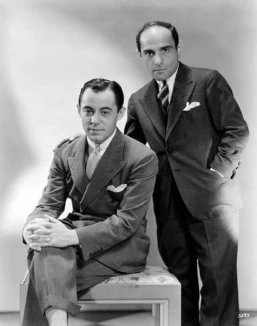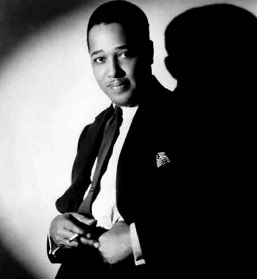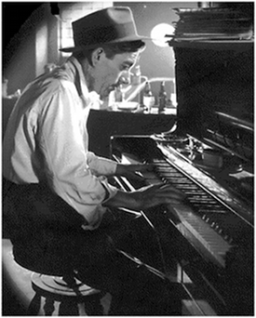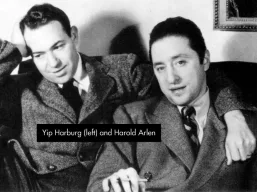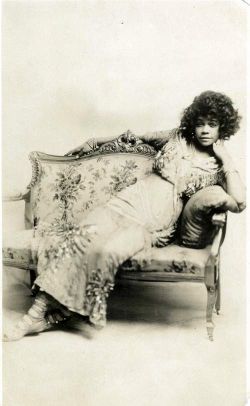The first and second Swing Eras
____________________________________
Ah, swing, well, we used to call it syncopation—then they called it Ragtime, then blues—then jazz. Now, it’s swing. Ha! Ha! White folks yo’all sho is a mess.
Louis Armstrong, when asked by Bing Crosby on his radio show to define swing music, quoted in Scott Joplin and the Age of Ragtime by Ray Argyle (2009), p. 172 — According to Wikipedia, the remark was a response to this prompt by Crosby, “We have as our guest the master of swing[,] and I’m going to get him to tell you what swing music is.”
Some major songwriters of the “Pre-Swing” and Swing Eras, or the first and second Swing Eras
- Duke Ellington
- Cab Calloway
- George and Ira Gershwin
- Richard Rodgers and Lorenz Hart (1925-1942)
- Cole Porter, part 1: standards and selected hits 1928-1934
- Cole Porter, part 2: selected standards 1935-1939
- Harold Arlen: selected songs, 1929-1938
- Jimmy McHugh and Dorothy Fields: two early hits and selected standards, 1928-1935
- Harry Warren: selected hits and standards 1928-1946
Pre-Swing, or the first Swing Era
The end of the Jazz Age is usually given as coinciding with the onset of the Great Depression, late 1929, while the duration of the Swing Era is typically given as 1935-1946. Previously, I adopted the term “Pre-Swing” to cover the interim in which the music later to be called swing was composed and performed by bands such as those led by Fletcher Henderson, Duke Ellington, and Cab Calloway. However, in a 13 June 1953 Charlie Parker interview with John T. Fitch (as John McLellan) for radio station WHDH in Boston, as quoted in a collection of Charlie Parker interviews at the site Miles Ahead, Bird said,
Dixieland I think was introduced in ’14 or ’15, and then the Swing Era came in 1928 and lasted ’till 1935, ’36.
That one sentence uttered by Parker, together with lots of documented evidence — including hundreds, if not thousands, of audio and filmed recordings — that swing music not only existed but flourished for several years before 1935, was enough to prompt me to change to referring to the earlier era, extending from the late Jazz Age to approximately the beginning of the received Swing Era (sometimes specified precisely as Benny Goodman’s engagement at the Palomar Ballroom starting on 21 August 1935) as the first Swing Era.
____________________________
On what set swing apart from earlier “sweet” dance bands Wikipedia offers the following*:
Swing music abandoned the string orchestra and used simpler, “edgier” arrangements that emphasized horns and wind instruments and improvised melodies.
and
The overall effect is a more sophisticated sound than the styles of the 1920s, but with an exciting feel of its own. Most jazz bands adopted this style by the early 1930s, but “sweet” bands remained the most popular for white dancers until Benny Goodman’s appearance at the Palomar Ballroom in August 1935. The audience of young white dancers favored Goodman’s “hot” rhythms and daring swing arrangements. “Hot Swing” and Boogie Woogie remained the dominant form of American popular music for the next ten years.
Feature Pages (Internal) – For the composers and bands the term Pre-Swing will be applied (for now) to early compositions and performances ranging from about 1927-35, with variation on the earliest year.
Band Leaders
- Louis Armstrong and his Hot Five, 1926 selections
- Louis Armstrong and his Hot Five: recordings of 1925-1928 — Note, 4 April 2016: I plan to eventually change the links to .ra files presently used on this page to embedded audio players. I think archive.org has audio files of most, if not all, of the recordings included here.
- Duke Ellington
- Cab Calloway, selected originals and covers 1930-1939
- Cab Calloway, part 2: selected additional recordings 1934-1940
- Red Nichols & his Five Pennies: early short films
- Red Nichols and His Five Pennies (1929)
- Million Dollar Notes (1935)
- Red Nichols & his World Famous Pennies (1936)
Projected orchestra and band feature page subjects
- Fletcher Henderson & Don Redman
- Louis Armstrong
- Earl Hines
- Chick Webb
- The Dorsey Brothers
Vocal groups and individual performers
- Boswell Sisters: profile + selected recordings, 1925 & 1930
- Ruth Etting: selected recordings 1927-35
- Mills Brothers: bio and recordings 1929-1937
- The Rhythm Boys
“Year” features
- 1930 standards: jazz and popular
- 1931 standards: jazz and popular, plus some popular hits
- 1932 standards
- 1933 standards
- 1934 standards
Film
- The Broadway Melody (1929) film
- The Hollywood Revue of 1929
- King of Jazz (1930)
- The Big Broadcast (1932)
- 42nd Street (1933)
- Gold Diggers of 1933 – 2 songs, gallery
- Footlight Parade (1933)
- Anything Goes, musical (1934) — 4 Cole Porter standards
The second Swing Era
Adapted from the Wikipedia article on the Swing era:
The second, or predominantly white band leader, Swing Era was the period of time (1935–1946) when big band swing music was the most popular music in the United States. Though the music had been around since the late 1920s and early 1930s, being played by black bands led by such artists as Duke Ellington, Jimmie Lunceford, Benny Moten, Cab Calloway, Louis Armstrong and Fletcher Henderson, there is a general consensus of belief that the Swing Era started with Benny Goodman’s performance at the Palomar Ballroom on 21 August 1935, which sparked a movement that quickly spread across the country.
Other band leaders who rose to prominence during this time include brothers Tommy and Jimmy Dorsey, Glenn Miller, Count Basie and Goodman’s future rival Artie Shaw.
Several factors led to the demise of the Swing Era: the recording ban from August 1942 to November 1944 (The union that most jazz musicians belong to told its members not to record until the record companies agreed to pay them each time their music was played on the radio), the earlier ban of ASCAP songs from radio stations, World War II which made it harder for bands to travel around as well as the “cabaret tax”, which was as high as 20%, the change in music taste and the rise of bebop. Though Ellington and Basie were able to keep their bands together (the latter did briefly downsize his band; from 1950-1952), by the end of 1946 most of their competitors were forced to disband, bringing the Swing Era to a close.
Band Leaders
- Cab Calloway
- Duke Ellington
- Benny Goodman: selected standards index and gallery
- Woody Herman and his Orchestra (1938) – short film
- Artie Shaw’s Class in Swing (1939) – short film
- Glen Gray and The Casa Loma Orchestra (1942) – short film
Other Performers
- The Andrews Sisters
- The Andrews Sisters and Bing Crosby: 22 hit recordings 1939-1951
- Fred Astaire pages
- Fred Astaire and Ginger Rogers pages:
- Selected standards introduced in films

- Cheek to Cheek – Top Hat (1935)
- Let’s Face the Music and Dance — Follow the Fleet (1936)
- The Way You Look Tonight – Swing Time (1936)
- A Fine Romance – Swing Time (1936)
- Change Partners – Carefree (1938)
- featured film
- Swing Time (1936) — 6th Astaire and Rogers RKO film: songs include Pick Yourself Up, The Way You Look Tonight, Waltz in Swing Time, A Fine Romance, Bojangles of Harlem, and Never Gonna Dance
- Shall We Dance (1937) — They Can’t Take That Away from Me, Let’s Call the Whole Thing Off
- A Damsel in Distress (1937) — A Foggy Day (in London Town), Nice Work If You Can Get It
- photo gallery
- Selected standards introduced in films
- Bing Crosby and the Andrews Sisters: 22 hit recordings 1939-1951
- Dorothy Dandridge
- Judy Garland pages
_______________________________
selected external links
- Wikipedia
- Big Band Library
- John Wright’s British Dance Band Show and British Dance Band Show playlists (at r2ok.co.uk)
- British Dance Band Encyclopedia — by Mike Thomas
- Swing Time — Historique des musiques et danses jazz de l’Ere Swing (swing-time.fr/main.html)
- Swingmusic.net
- The Modernaires Official Site
Radio
_______________________
* 18 June 2017 update: Neither of the two quotes presented here still exists in the Wikipedia page on Swing music.







